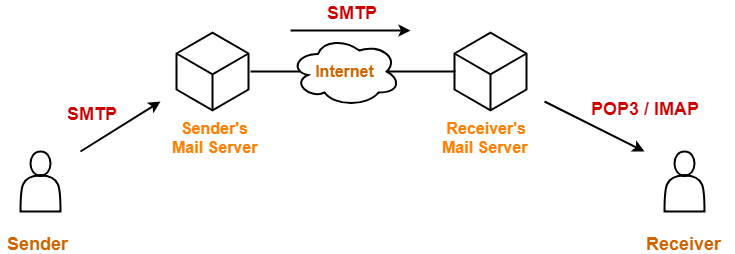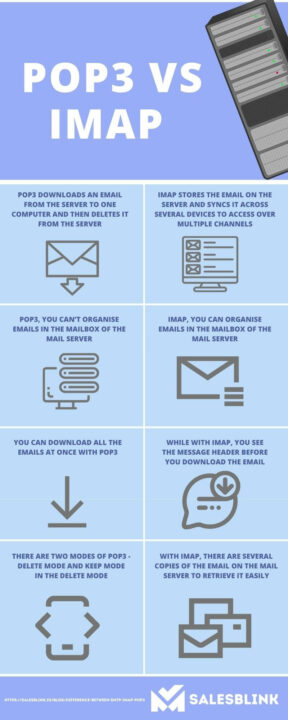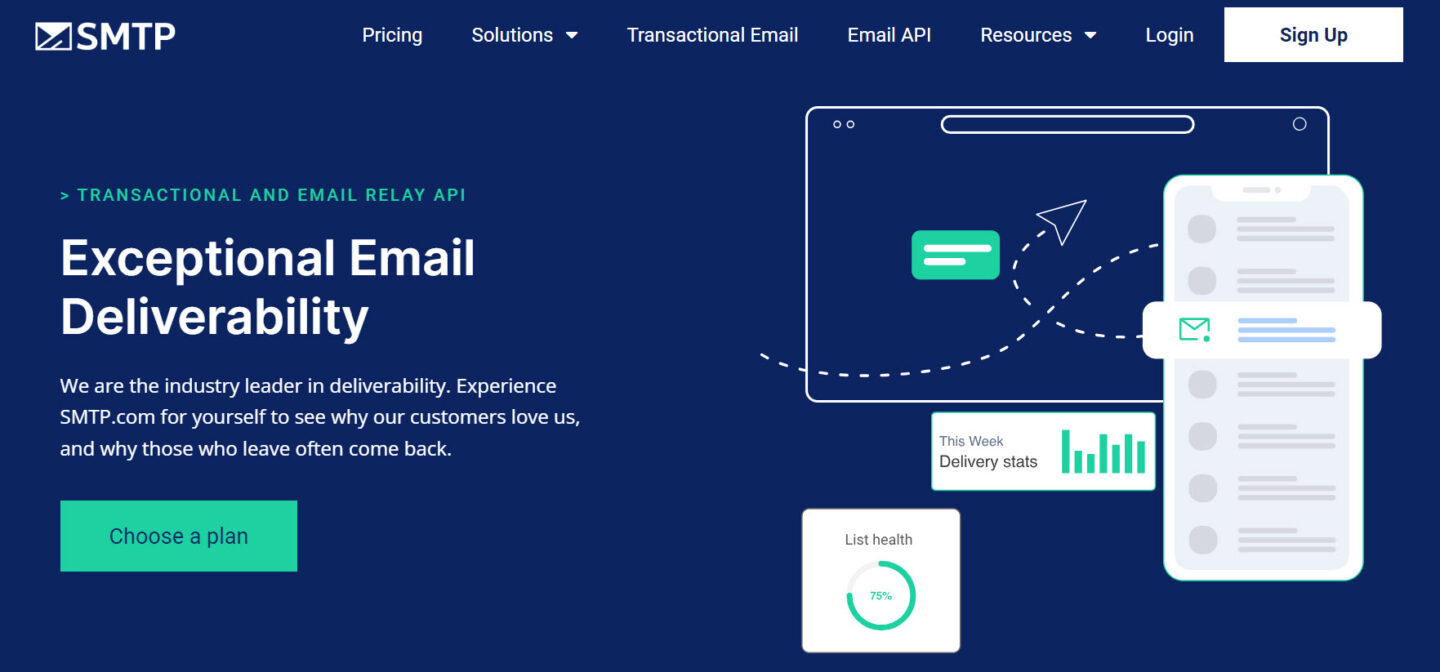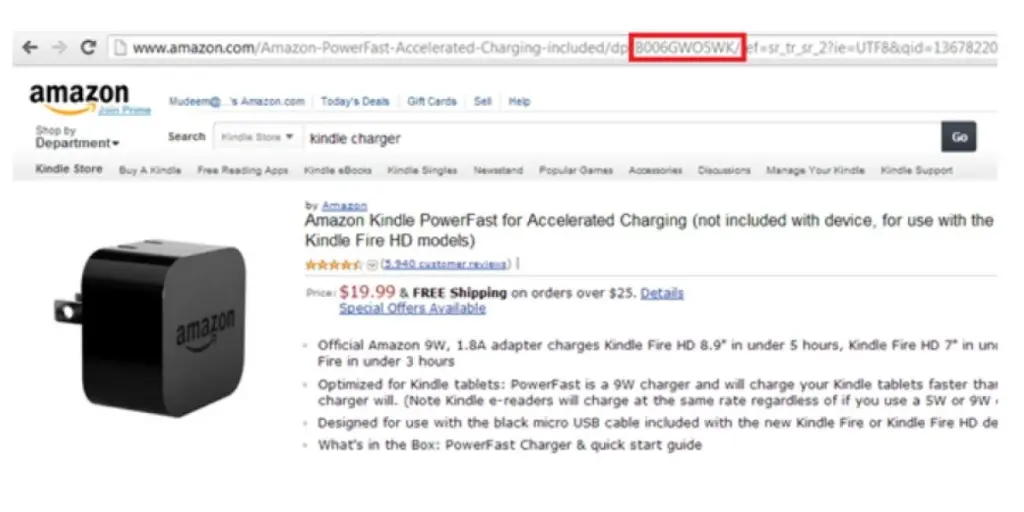What is SMTP?
SMTP stands for Simple Mail Transfer Protocol. It’s a set of rules that enable email transmission across the internet. This protocol oversees email routing from your outbox, through various servers, to the recipient’s inbox.
At its core, SMTP is about connectivity in digital communication. It’s what makes sending and receiving emails possible across different email servers.
Its primary purpose is to streamline and standardize the process of sending emails, ensuring smooth, efficient delivery.
What is an SMTP Server?
An SMTP server is a computer server that uses SMTP to send and receive emails—like a digital post office.
As a post office sorts and dispatches physical mail, an SMTP server processes and directs electronic mail.
The primary job of an SMTP server is to ensure that your email reaches its destination.
It acts as a middleman between the sender and the recipient. When you hit ‘send,’ the email is first sent to an SMTP server. This server then communicates with other servers to deliver the email to the right inbox.
Free SMTP servers offer basic services and are ideal for small-scale or personal use. However, they often have limitations, such as a cap on the number of emails sent per day or reduced deliverability rates.
Despite these limitations, free SMTP servers can be a good starting point. They help you understand SMTP email service basics without any investment. However, paid SMTP providers offer more robust features.
How does SMTP work?
Understanding how SMTP works is like following a letter’s journey through a postal system. When you send an email, an SMTP delivers it from your outbox to the recipient’s inbox.
Here’s a simplified breakdown of the SMTP process:
- Sending the email: When you initiate the email-sending process, your email client (e.g. Gmail or Outlook) connects to your SMTP server.
- Verifying and routing: The SMTP server selects the best email route after confirming the sender’s details. It’s like a sorting facility.
- Locating the recipient: The server uses a domain name in the recipient’s email address. It can locate the right destination server using a domain name like gmail.com.
- Delivering the email: The SMTP server communicates with the recipient’s server. It then transfers the email if the recipient’s server is ready.
- Queuing for later: The server keeps the email on a delivery queue if the recipient’s server is busy or unavailable. The SMTP email server will try to send it again later.
Each step above is crucial in ensuring your email reaches the right person.

SMTP commands
Commands are like a mail carrier’s instructions when delivering a letter. These commands guide the email through various stages.
Some key SMTP commands are:
- HELO/EHLO: This greeting command initiates communication between the SMTP client and server. ‘EHLO’ is the extended version for servers supporting enhanced features.
- MAIL FROM:This command indicates the sender’s email address, similar to writing your return address on an envelope. It tells the server the origin of the email.
- RCPT TO: Short for ‘Recipient To,’ this command specifies the recipient’s email address.
- DATA: This command signals the start of the email’s content—the body and subject. Think of it as the actual letter inside your envelope.
- QUIT: This final command ends the SMTP session, like dropping your letter into the mailbox.
Email protocols
SMTP is just one part of the email ecosystem. It works in tandem with other protocols like IMAP and POP3. They retrieve emails from a server, and each plays a unique role.
Let’s break down how they interact with SMTP.
1. SMTP and IMAP
SMTP handles the sending of emails.
IMAP (or Internet Message Access Protocol) is for receiving and storing emails. It’s like a mailbox that stores and organizes your mail until you’re ready to read it.
SMTP and IMAP complement each other. SMTP sends the emails, and IMAP keeps them on the server for easy access from multiple devices.
2. SMTP and POP3
POP3, or Post Office Protocol version 3, is another protocol for receiving emails. Unlike IMAP, it downloads emails to your device and deletes them from the server.
POP3 is like a P.O. box where you pick up your mail to take home. Once you have it, it’s no longer at the post office.
Here’s an illustration showing the difference between IMAP and POP3:

Understanding these email protocols helps optimize your email SMTP service. It’s about choosing the right combination to suit your email needs.
SMTP providers
SMTP providers are like specialized delivery services for your emails. They are crucial in facilitating seamless email communication for individuals and businesses.
Providers play the following roles:
- Facilitating email sending: These providers offer access to SMTP email servers. This allows users to send emails more efficiently than through personal email servers.
- Business and individual use: SMTP providers cater to various email-sending needs. This includes a business newsletter or a personal message.
Some advantages of using SMTP providers include:
- Better deliverability: These providers ensure your emails reach their destinations. They manage issues like spam filters and blacklists.
- Efficient email management: They offer tools for managing large volumes of emails. They also offer email tracking and analytics. This is vital for businesses focusing on email marketing.
SMTP providers offer a reliable and efficient way to manage email SMTP services. They ensure swift and secure email delivery.
How to choose an SMTP provider
Selecting the right provider is crucial for your email communication strategy. Here are some popular SMTP providers, each with unique features and strengths:
1. SendGrid

SendGrid is a cloud-based SMTP provider. It’s renowned for its user-friendly interface and extensive email management capabilities.
Key features
- Advanced analytics: It offers detailed insights into email opens, clicks, and bounces.
- Email template engine: It has easy-to-use templates for quick email creation.
2. Mailgun

Mailgun offers robust email automation and deliverability solutions. It’s ideal for developers and businesses seeking complete control of their email communications.
Key features
- Email validation: It verifies email addresses to reduce bounce rates.
- Flexible APIs: Allows easy integration with existing systems.
3. Amazon SES (Simple Email Service)

Amazon SES is a cost-effective, scalable email service. It’s particularly suited for businesses deeply integrated with the AWS ecosystem.
Key features
- High scalability: It manages large volumes of email easily.
- Cost-effective: It offers a pay-as-you-go pricing model.
4. SMTP.com

SMTP.com has been a leader in email delivery for over two decades. It offers robust and secure solutions for large-volume email sending.
Key features
- Robust security: Its focus is on secure email sending.
- Reputation defender: It helps maintain the sender’s reputation for high deliverability.
Consider the following factors when choosing an SMTP provider:
- Business size and email volume: Ensure the provider can handle your specific volume of email.
- Specific needs: Look for features that align with your business objectives. Features like analytics or security are essential.
- Budget: Consider if the cost fits into your financial plan.
- Deliverability rates: Investigate their success in delivering emails to inboxes.
- Customer reviews: Check what existing users say about their service.
- Trial periods: Utilize trial periods to test the service before committing fully.
The right SMTP provider can impact your email marketing and communication efforts. Assess your needs and choose a provider that aligns with your business goals and budget.
SMTP in email marketing
SMTP is indispensable in email marketing. It offers many benefits that enhance the efficiency of any email marketing strategy. Here’s a closer look at these advantages:
1. Reliability in email delivery
SMTP servers ensure your emails consistently reach their intended recipients. They manage sending processes reliably, which minimizes lost or undelivered emails.
2. Improved deliverability
Good SMTP services enhance email deliverability. They manage a sender’s reputation, preventing emails from landing in spam folders.
3. Handling high volumes of emails
SMTP can process large volumes of emails simultaneously, similar to sending bulk text messages. This capability is essential for email marketing campaigns that send thousands of emails.
4. Scalability
As your business and email marketing needs expand, SMTP services scale accordingly. They handle increasing email traffic without sacrificing performance or deliverability.
5. Integration with email marketing tools
SMTP services seamlessly integrate with various email marketing platforms. This allows you to automate campaigns and use advanced features like customer segmentation.
6. Tracking and analytics
Many SMTP providers offer comprehensive analytics. You can track open rates, click-through rates, and other metrics. Tracking helps you gauge the effectiveness of your campaigns.
7. Security and compliance
SMTP services include robust security features for data protection and compliance with regulations like the GDPR. It secures data transmission and handling.
8. Customization and personalization
SMTP services enable the customization and personalization of email messages. Tailoring messages to different audience segments enhances engagement.
9. Cost-effectiveness
Many SMTP services are cost-effective, especially given their scalability and improved deliverability. This makes them a valuable investment for businesses of all sizes.
10. Simplified email management
Using an SMTP service simplifies the management of outbound emails and reduces the burden on internal resources and IT infrastructure.
Conclusion
SMTP is a vital element in digital communication. Its primary role is to ensure the efficient delivery of emails. In the context of email marketing, SMTP’s importance becomes even more pronounced.
This protocol manages high volumes of emails, a common requirement in marketing campaigns. It aids in maintaining high deliverability rates, which is essential for reaching your target audience.
For businesses, the integration of SMTP with marketing strategies can bring reliability and extra effectiveness to your digital outreach efforts.
FAQ
1. What is SMTP and why is it used?
SMTP, or Simple Mail Transfer Protocol, is used for sending emails over the Internet. It standardizes email transmissions, ensuring they reach their intended destinations.
2. How do I find my email SMTP server?
To find your email SMTP server, check your email application’s settings or preferences section. Usually, it’s listed under ‘Mail Server’ or ‘SMTP Settings’. For specific instructions, refer to your email provider’s support documentation.
3. What is the email sender SMTP?
The email sender SMTP refers to the SMTP server used by the sender to dispatch emails. It’s the server that processes outgoing emails. It also communicates with recipient servers to deliver emails.
4. How do I set up an SMTP email?
To set up an SMTP email, you need to configure your email client with your SMTP server details. This includes the server address, port number, and authentication credentials. These settings are often provided by your email or SMTP service provider.
5. Do I need an SMTP server to send email?
Yes, you need an SMTP server to send emails. It’s the mechanism that sends your emails from your email client to the recipient’s inbox. Most email providers include access to an SMTP server as part of their service.
Source from Omnisend
Disclaimer: The information set forth above is provided by omnisend.com independently of Alibaba.com. Alibaba.com makes no representation and warranties as to the quality and reliability of the seller and products.








